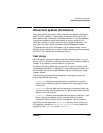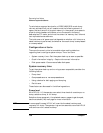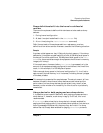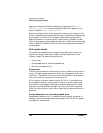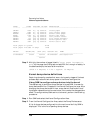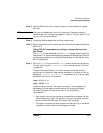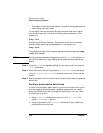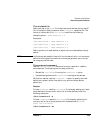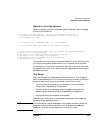
Chapter 7 155
Recovering from failures
Abnormal system shutdowns
NOTE With HP-UX 11.0, it is possible to analyze a crash dump directly from
dump devices using a debugger that supports this feature. If, however,
there is a need to save it to tape or send it to someone, copy the memory
image to the HP-UX file system area first.
If there is a disk space shortage in the HP-UX file system area (as
opposed to dump devices), the operator can elect to have savecrash (the
boot time utility that does the copy) compress the data as it makes the
copy.
Partial save (savecrash -p)
If the system has plenty of dump device space but is limited in HP-UX
file system space, consider using the -p option for the savecrash
command. This option copies only those pages on dump devices that are
endangered by paging activity (i.e. pages on the devices used for both
paging and as dump devices). Pages that are on dedicated dump devices
remain there.
To configure this option into the boot process, edit the file
/etc/rc.config/savecrash and comment out the line that sets the
environment variable SAVE_PART=1.
Defining dump devices
When defining dump devices, it is important to accurately determine the
amount of space needed to hold the dump without wasting disk space. To
save a full dump, the amount of dump space needed is equal to the size of
the system’s physical memory.
For selective dumps, the size of dump space varies, depending on the
classes of memory be saved. To determine amount of space needed,
perform the following procedure:
Step 1. When the system is running with a typical workload, enter the following
command:
/sbin/crashconf -v
The following typical output appears:



